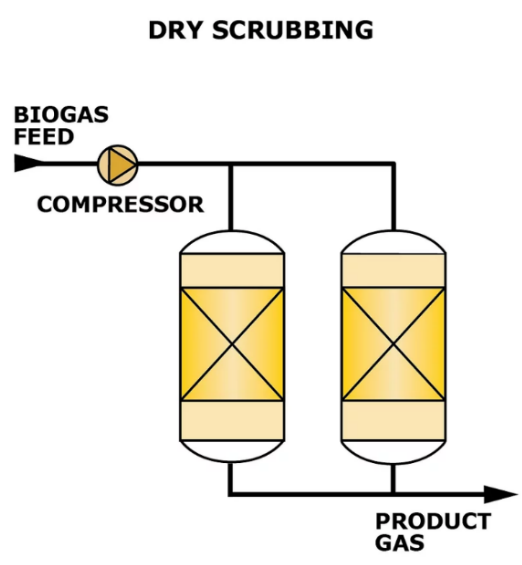Gas Desulfurization
Pyro Green-Gas offers many desulfurization processes tailored to balance CAPEX and OPEX for specific gas flows and conditions. Broadly there is dry desulfurization; either via a catalytic redox reaction onto media or adsorption, and there is absorption where the gas contacts a curated absorbing liquor where chelated iron interacts with and removes hydrogen sulfide from the gas. The latter is particularly well suited for large flows and highly sour gas.
Design
Features
&
Benefits
The process operates continuously and only requires a periodical inspection and cleaning of some internal components to ensure optimum efficiency and performance. For outlet requirements of less than 100 ppmv, the Iron Chelate desulfurization process can be followed by a dry desulfurization step which can bring hydrogen sulfide concentration down to ≤ 4 ppmv.

Advantages
- Suitable for high sulfur load and large gas volume
- No pollutive waste streams
- Yields elemental Sulfur as by-product
- Low energy consumption
The process consists in passing the hydrogen sulfide charged gas through a tower filled with the set amount of active media for the required hydrogen sulfide outlet concentration over the design life of the media. Generally, two towers are installed with inter connecting piping and valves to operate each tower in a lead or lag mode. This feature allows for the optimal use of the desulfurization media and minimizes the operating cost of the desulfurization process.

Advantages
- High desulfurization efficiency with some of the lowest outlet H2S concentration
- Easy management, simple, and reliable operation
- No associated Power Consumption
- Flexile design in terms of media selection, sizing for replacement frequency, lead-lag arrangement etc
- Simple structure with a long lifetime in a small footprint for a low investment
